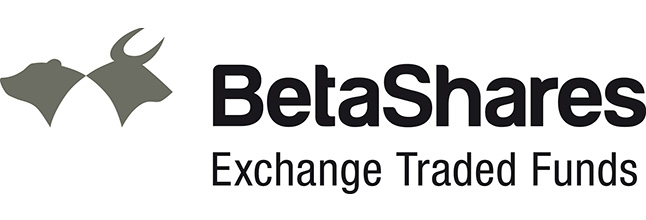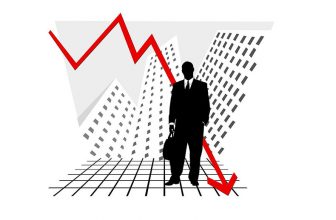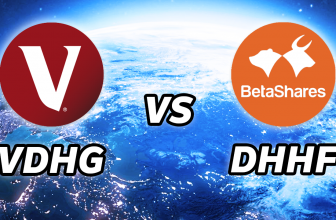ETF growth in Australia has exploded in the recent years and in my opinion BetaShares are extremely innovative and forward thinking with the ETFs they are providing to the ASX, and it’s great having some diversity and healthy competition here in Australia.
So in this post I’m going to go over what in my opinion are the best BetaShares ETFs on the ASX in 2020 for 6 different categories. We’ll go over the best BetaShares ETF for Dividend Investing, the best BetaShares ETF for Technology Exposure, the best BetaShares ETF for Australian Shares, the best BetaShares ETF for International Shares, the best BetaShares ETF for the Bonds and to top it all off we’ll end it with the best with what I think is the BetaShares ETF Overall. These ETFs will all have varying levels of risk and return and it’s impossible to know how they’ll perform in the future. However I will go over what underlying index the ETF is investing, any management fees, as well as historical returns and dividend yields. And it will provide you with some great options to consistently grow your wealth over the long term if you stick to a stable passive investing strategy using these ETFs.
If you don’t know about BetaShares,they are an ETF manager in Australia similar to Vanguard and VenEck with a whole range of ETFs available on the ASX. BetaShares has been around since 2009 and currently have 65 different ETFs available on the ASX, given that there’s just over 200 ETFs available in total on the entire ASX, BetaShares actually make up a considerable portion of the ETF options available on the ASX. I would actually consider them to have one of the broadest range of ETFs available out of most providers on the ASX, with plenty of standard low cost indexed options, all the way to more speculative industry and sector specific ETFs, which is something I really like.
And they must be doing something right, as across all their ETFs they have over $11 billion in assets. And in 2019 they were the #2 ranked ETF issuer in terms of cash flow into their ETFs, being beaten only by the juggernaut Vanguard.
Best BetaShares ETF for Dividend Investing – Australian Dividend Harvester Fund (HVST)
We’ll start off with what I think is a really unique ETF and what I would consider to be the best BetaShares ETF for investors that are purely focused on dividend returns, and aren’t concerned at all about capital appreciation. This makes it more suitable for investors who want consistent cash flow from their investments. The ETF I’m talking about is called the BetaShares Australian Dividend Harvester Fund and one thing I want to note straight away is that it is not a passive ETF that tracks an index, it’s actually an actively managed ETF so something to keep in mind.
So firstly HVST pays dividends monthly, there aren’t many dividend ETFs that provide this frequency of payment as most are quarterly. And it’s really a great feature of this ETF for those who want those consistent dividend payments to manage their cash flow.
Secondly it has an extremely high franking rate, way higher than you will get through any standard Australian Shares ETF. The current franking level of the HVST ETF is 96% which makes it extremely tax effective for Australians.
So in terms of the yield over time the ETF aims to provide a 1.5x higher dividend return than a broad Australian sharemarket and their 12 month distribution yield is 11%, which actually seems a bit higher than 1.5x. But as you can see this fluctuates over time each month and is actually quite a bit lower now in July due to the pandemic forcing a bunch of Australian companies to either slash or forego dividend payments. Excluding the most recent month, over 5 years the yield has ranged from 8-11% every, which is actually not too bad. However like I mentioned previously this ETF should not be relied on for any capital growth, as over the last 5 years the share price of the ETF is basically the same, and capital growth is not the aim of the ETF.
If we look at the top investment of HVST we can see its mainly weighted towards large caps in industries like financials, commodities and healthcare. Not too surprising since really only large caps are the ones that will pay significant dividends.
A particularly unique feature of the Australian Dividend Harvester Fund is that in order to provide stable and consistent returns with minimal fluctuations, they actually trade ASX200 futures to reduce risk. However this would obviously slightly erode returns and also increase management fees, which is fairly high at 0.9% p.a. Overall HVST is great for investors who want high levels of franked dividend income through frequent payments.
Best BetaShares ETF for Technology Exposure – Global Cybersecurity ETF (HACK)
Up next as I’m sure you guys would know by now is my personal favourite category, that is the Technology sector. BetaShares is probably what I would consider one of the best ETF providers on the ASX for technology ETF options and has a ton of really innovative options to choose from, so it was actually really hard to pick just one BetaShares technology ETF that I think is one of the best right now.
In saying that the one that I think is probably the best right now has a good mix of both capital growth and dividend income, and it has had good historical returns (not the highest out of all the BetaShare technology ETFs) but I think it’s also set up for really good returns in the future. The ETF I’m talking about is the BetaShares Global Cybersecurity ETF also known as HACK.
As more and more businesses are moving online and the importance of their remote workforce never being as important as it is now due to the pandemic. It makes cybersecurity and privacy based companies much more valuable and HACK provides a simple way to easily access a diversified portfolio of the world’s leading cybersecurity companies.
So I said the historical return isn’t the highest out of all the technology ETFs however it is still very respectable, since inception returning over 19% p.a, whilst at the same time also having a 12 month dividend yield of 8.4% which is paid semi-annually, but you won’t get any franking with this ETF. And it has a management fee of 0.67%, so again quite high but definitely in the ballpark for any niche sector specialised ETF.
If we look a bit deeper into the holdings in HACK the ETF is actually tracking the Nasdaq CTA Cybersecurity Index, and is designed to track the performance of companies engaged in the Cybersecurity segment of the technology and industrial sectors. The Index includes companies primarily involved in the building, implementation and management of security protocols applied to private and public networks, computers and mobile devices in order to provide protection of the integrity of data and network operations.
The top 10 holdings make up around 50% of the ETF and include some well known names as well as some not so well-known ones as well, at least in the consumer space. One thing to keep in mind is that the ETF is heavily weighted towards the US at 87%, purely because that is where a lot of these cybersecurity companies are located. HACK would be a good component inside a portfolio to get some diversified technology exposure.
Best BetaShares ETF for Australian Shares – Australia 200 ETF (A200)
Now onto Aussie shares where we can go back to getting some of those juicy franking credits. Really this one is probably the easiest one on the list to recommend and that is the BetaShares Australia 200 ETF or A200. A200 seeks to track the return of the top 200 companies by market capitalisation on the ASX for a really low management fee of only 0.07% p.a. This is actually the lowest management fee of any broad market Australian Index ETF from any ETF provider, so definitely a nice point of difference. But do keep in mind that A200 is not exactly the same as its main competitor VAS, VAS actually tracks the largest 300 companies on the ASX whilst so they will be very similar because they’re both weighted and the 201-300 ranked companies make up a very small portion of the asx 300.
If we look at the ASX200 Index, since inception it’s returned around 8% p.a, on top of that the average dividend yield has been around 4% at around 70-80% franking level, distributions are paid quarterly with the largest usually being around the end of the financial year in July. So that really is a great return over the long run and given that the index has actually slightly underperformed this is the last 5 years, if you’re one to look at mean reversion it might suggest that its a good time to get into Aussie shares.
The top 10 holdings include all Australian household names such as the big 4 banks, Woolies, Wesfarmers and BHP. Largest holding actually being CSL which in recent years has seen massive growth in their share price. There isn’t too much I can say about A200, other than it is an extremely solid ETF for Australian Share exposure with extremely low management fees. For anyone who wants to include some Australian share exposure with a good mix of capital growth and franked dividend yields then A200 would be a great option for that.
Best BetaShares ETF for International Shares – Global Quality Leaders ETF (QLTY)
Moving on to the next category which is the best BetaShares ETF for International Shares. I really love international ETFs as they provide you with that global diversification which is really hard to get if you’re just trading individual stocks on the ASX, as they’re mostly Australian companies. And again BetaShares has some really great options in this category with over 25 different ETFs in their international category. They’ve got everything from global diversified ETFs all the way to extremely niche, which reminds me, let me know in the comments if you want me to cover niche ETFs and which ones I think are worth investing in.
In terms of what I think is the best BetaShares ETF for International Shares, it’s actually one of their newest ETFs and that is the Global Quality Leaders ETF or QLTY. This is part of a new breed of ETFs that track these things called quality scores or quality indexes. These quality indexes basically have a pretty strict criteria for entry and involve having a high return on equity, high profitability, low leverage and stable earnings. The index that QLTY tracks is the iSTOXX MUTB Global Ex-Australia Quality Leaders Index.
Since inception QLTY has returned over 19% p.a and has a relatively low management fee of 0.35%, as there isn’t usually a whole lot of movement within a quality index, so there is minimal rebalancing of the ETF required. It does also have a small dividend yield of around 1.2% that’s paid semi-annually.
Why I think this is the best option out of the international ETFs is because you’re 1) getting the same global diversification as you would in broad market ETF but 2) you’re essentially getting just the 150 best performers from the thousands in those ETFs, 3) with the low management fee. I think that QLTY is a great option for those looking for high-growth and are looking for a long term hold.
Best BetaShares ETF for Bonds – Global Government Bond 20+ Year ETF – Currency Hedged (GGOV)
Before diving into what I think is the best overall ETF from BetaShares I wanted to include my thoughts on what I think is probably the best Bond ETF they have available, which they actually only launched a few months ago and that is, the BetaShares Government Bond 20+ Year ETF, GGOV.
Firstly out of all of their Bond ETFs, this had the lowest management fee of 0.22% which is very important when you’re looking at bonds because whilst the returns are stable, they are obviously going to be a lot lower than a market ETF. This means it’s really important you are minimising any avoidable fees.
Secondly it only invests in government bonds from G7 developed market economies of high quality. So you’re not getting any junk corporate bonds, you’re only getting the highest quality government treasuries which are diversified across G7 nations, that is the US, Japan, Germany, UK, Italy, France and Canada. And there’s also a cap of 25% on any one country which is great to have as well.
The ETF is hedged back to Aussie dollars, so you aren’t exposed to currency fluctuations, which given the low management fee is actually quite a nice inclusion. But finally and probably the most interesting thing about this Bond ETF is that its actually had really strong growth over the last 10 years, of around 10% p.a.
This is mainly due to the fact that the ETF is purchasing 20 year bonds, so the returns aren’t so heavily dictated by actual cash flows from short term bonds like most other Bond ETFs. In periods of equity market weakness, government bonds have tended to rise in value, providing diversification benefits to portfolios. This ETF’s focus on long duration bonds further enhances these potential defensive benefits which is why I think it’s a good option to consider if you’re looking to get some exposure towards Bonds to diversify your portfolio.
Best BetaShares ETF Overall – NASDAQ 100 ETF (NDQ)
Lastly but definitely not least we have what I consider the best BetaShares ETF overall. How I chose this ETF was mainly based around suitability for most portfolios and also because of how long the index has been around that it tracks, which gives it quite a bit more credibility.
The ETF that I would consider BetaShares Best overall is the Nasdaq 100 ETF or NDQ, and it’s definitely one of their most popular ETFs on the ASX, like the name suggests it invests in the top 100 companies on the Nasdaq stock exchange in the US by market capitalisation, however note that it actually excludes any financial companies.
There’s a few main reasons why I think it’s a good option for Aussies, especially as we are moving towards a more digital future.
Firstly I like that in one trade you get access to a whole bunch of extremely profitable companies that we are exposed to as consumers everyday, like Google and Apple. Secondly just by matter of circumstance it’s got a strong focus on technology, NDQ provides diversified exposure to a high-growth potential sector that is under-represented in the Australian sharemarket.
Also good to note that this isn’t currency hedged but BetaShares literally just launched a currency hedged version of NDQ a week or 2 ago called HNDQ with a management fee premium of 0.03% bringing it to 0.51% instead of 0.48%, otherwise exactly the same.
Lastly I like NDQ because its simple and should provide good returns over the long-term. Since inception on the ASX its returned almost 20% p.a but keep in mind that has been during a bull market, but even in the last few months the NDQ100 has recovered significantly better than the ASX200 or even the SP500 which shows that the companies in the index are quite resilient to bad economic conditions.
So there you go, those are my top 6 BetaShares ETFs in each of their categories. I’m sure these will be eventually changing over time but as of right now these are my thoughts. Which begs the question, what type of ETF will be the next that BetaShares releases, and what do you hope it is? I personally think it would be cool if they brought out a really low cost global shares ETF like IWLD but let me know what you would like to see.







